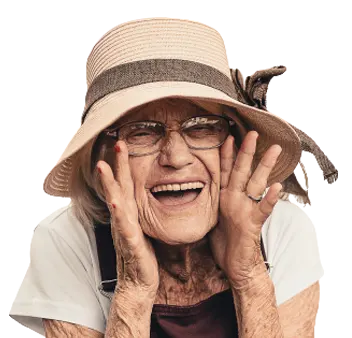The Best Things You Can Do Right Now to Prevent Falling
Every second of every day an older adult falls.
One out of five of these falls results in a serious injury such as broken bones or a head injury.
Falls are the leading cause of fatal and nonfatal injuries among adults age 65 and older.
These statistics from the Center for Disease Control and Prevention are staggering – and come at a great cost. Falls rob older Americans of their safety and independence. Annual medical costs to treat older adult falls exceed $31 billion.
Yet, there is reason to be hopeful. While falls may be the leading cause of injury and death among older Americans, they are not inevitable. In fact, there are several specific things you can do right away to help reduce your chances of falling.
Self Awareness – and Exercise
As people age, their muscles tend to weaken, their joints are not as flexible and their overall sense of equilibrium is not as keen as when they were younger.
“Our bodies just don’t adapt like they used to and we fail to realize things are changing,” explains Kevin Goodgame, Director of Rehab Services at The William Breman Jewish Home’s Aviv Rehabilitation Center. “Just getting up from the bed too quickly can result in a fall.”
Kevin points to two things to help prevent falls. This first is to not rush through the day.
“Give yourself more time,” says Kevin. For example, sit at the edge of the bed or your chair for a few minutes before getting up. This allows your blood pressure to adapt to the change in position and prevents dizziness. Kevin also suggests doing some ankle pumps and flexing your knees to loosen up your joints before jumping out of bed.
Kevin’s second piece of advice is to exercise.
“Walking is the best exercise, says Kevin. “It helps with your circulation and the weight bearing nature of walking helps prevent osteoporosis.
“People think that someone with osteoporosis falls and breaks their hip. More often than not, their hip breaks first and then they fall as a result,” Kevin explains.
Other exercise programs that improve balance, flexibility and strength also are helpful. Just make sure they are supervised by a trained professional and approved by your doctor.
Perform a Home Environment Check
It’s not just an awareness of physical changes that matter when it comes to fall prevention. Most falls happen at home so people also should make sure their living environment is safe, well-lit and clutter-free.
Get rid of things you could trip over like throw rugs, electrical cords and magazines. Add grab bars inside and outside your tub or shower and next to the toilet. If there are stairs in the home, make sure there are two secure rails on both sides. Also make sure your home is well lit by adding more or brighter light bulbs and nightlights.
“Set up your home environment for success,” says Kevin. “Simple modifications can make all the difference.”
See Things as Clearly as Possible
According to the National Council on Aging, less light reaches the retina aging eyes. This makes contrasting edges, tripping hazards and other obstacles harder to see. Cataracts and macular degeneration also become more common as we age.
Have your eyes checked at least once a year to keep your eye glass prescription current. And, be cognizant of the type of lenses you have. Tint-changing lenses can be hazardous when going from bright sun into darker buildings. Upon entry, change glasses or stop until your lenses adjust. Bifocal or progressive lenses can make things seem closer or farther away than they really are. Be mindful of that when climbing stairs or being more active.
If you do fall…
Even when they don’t get injured, many people who fall develop a fear of falling again. While a certain amount of cautiousness can be good, becoming too anxious only perpetuates the likelihood of falling.
“Once someone had fallen, they may try to overcompensate by becoming too sedentary,” says Kevin. “Then, their bodies weaken and they become less aware of their surroundings – which just increase the likelihood of falling.”
Instead, try to figure out what actually caused the initial fall and focus on doing the things recommended by a physical therapist or doctor.
Pride is another challenge in preventing falls. “Many consider a cane or walker to be a sign of getting older. But if a doctor or therapist recommends it, swallow that pride and use it. Pride is not worth a trip to the emergency room or rehab, or worse…reducing your independence.”
